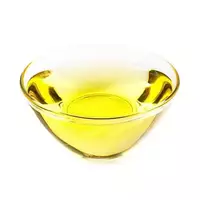Ginger oil

Recently, Asian cuisine has become popular among residents of our latitudes. as a rule, our compatriots begin their acquaintance with the culinary tradition of the peoples of Asia with the famous Japanese national sushi dish. By tradition, it is customary to serve soy sauce, horseradish wasabi and, of course, pickled ginger root to sushi. For thousands of years, ginger has been used in cooking, as well as in folk medicine, by residents of Asian states.
Ginger or Zingiber is classified as a Ginger plant family. Ginger root is used in cooking. Ginger got its original Latin name due to its appearance. Translated from the ancient language of Sanskrit, the word singabera sounds like the phrase "horned root. " It is worth noting that ginger root entered the territory of the Russian Empire in the 19th century. In those days, chefs used ginger as a spice. It is worth noting that ginger was ranked among the rather expensive and exotic seasonings that only wealthy and noble people could afford.
The root of ginger was brought to European territory by sailors, who in the Middle Ages begin to actively develop and study the territory of the states of Southeast Asia. It is noteworthy that ginger root in Europe was used primarily as a medicine. In historical documents, there are references to the fact that they tried to treat the plague with the help of ginger. Researchers believe that the homeland of ginger can be considered the territory of South Asia.
Ginger is currently cultivated on an industrial scale in China, Indonesia, India and Australia, as well as Jamaica, West Africa and Barbados. I use ginger root to produce spice, as well as ginger essential oil. The beneficial properties of ginger oil have also been used in folk medicine since ancient times. In addition, ginger food oil is produced, which can and should even be eaten for preventive or medicinal purposes.
It is worth noting that the beneficial properties of ginger oil are primarily due to the vitamin-mineral composition of the original natural material from which the product is made. The chemical composition of ginger oil is enriched with vitamin E, as well as saturated and unsaturated fatty acids, including amino acids essential for the human body. Ginger oil is obtained from the rhizome of the plant. In its appearance, ginger oil is not much different from other varieties of vegetable oils. In its appearance, ginger oil resembles a yellow viscous liquid.
Ginger oil is used as a medicine. In addition, the product can be used in cooking for dressing salads made of fresh vegetables and herbs. Among the main beneficial properties of ginger oil are the antiseptic and anti-inflammatory characteristics of the product. Ginger oil helps in the treatment of certain neuropsychiatric diseases and disorders. Ginger oil is used in aromatherapy, since the plant's essential oil helps calm the nervous system, as well as cope with severe headaches or migraines.
ginger oils 890 kCal
Energy value of ginger oil (Ratio of proteins, fats, carbohydrates - ju):
Proteins: 0 g (~ 0 kCal)
Fats: 99.9 g (~ 899 kCal)
Carbohydrates: 0 g (~ 0 kCal)
Energy ratio (bj | y): 0% | 101% | 0%
 Español
Español Français
Français Português
Português Русский
Русский 简体中文
简体中文 繁體中文
繁體中文 日本語
日本語 한국어
한국어 العربية
العربية Türkçe
Türkçe Қазақ
Қазақ Deutsch
Deutsch Italiano
Italiano Українська
Українська
